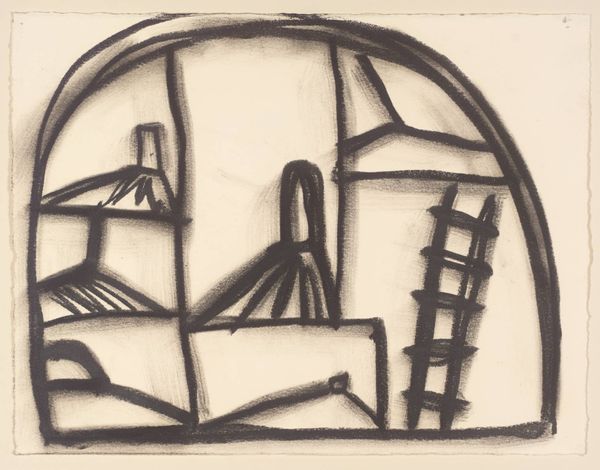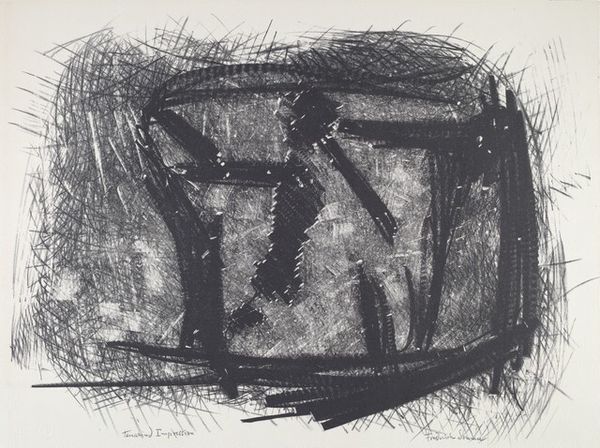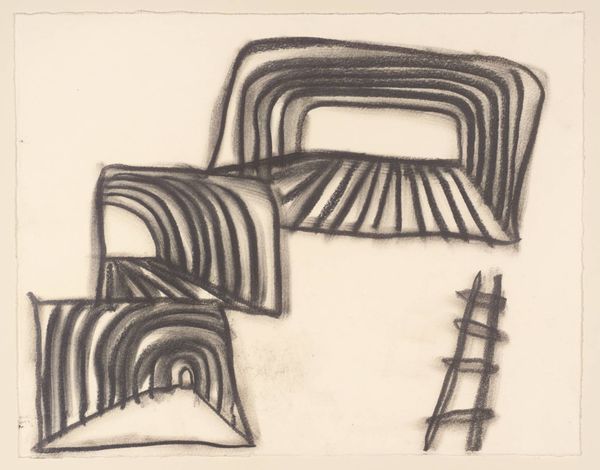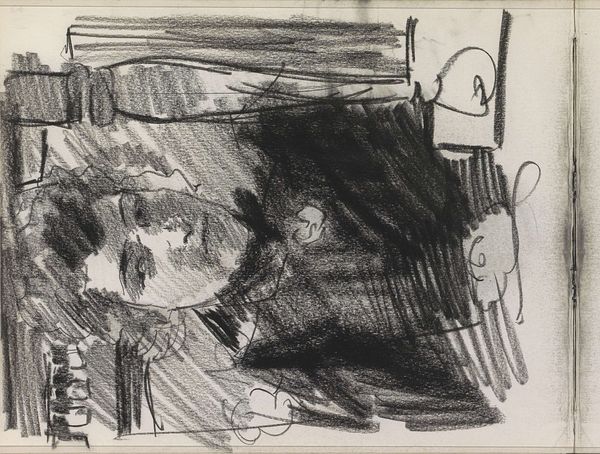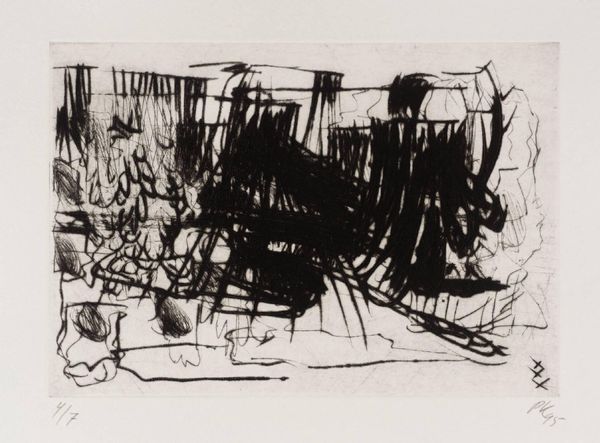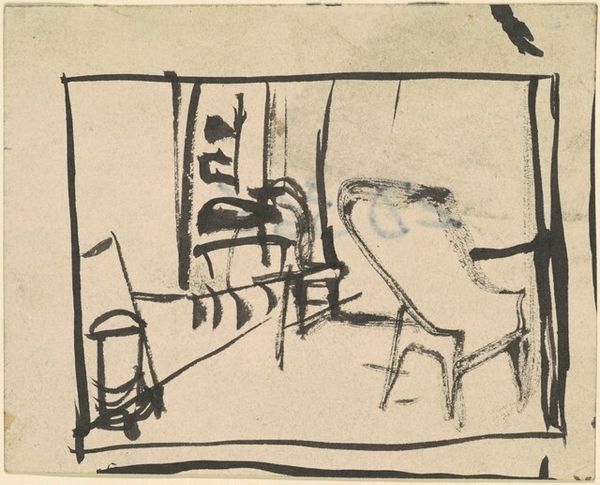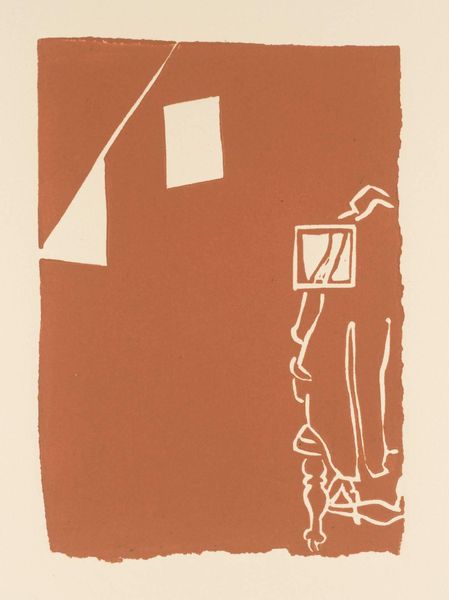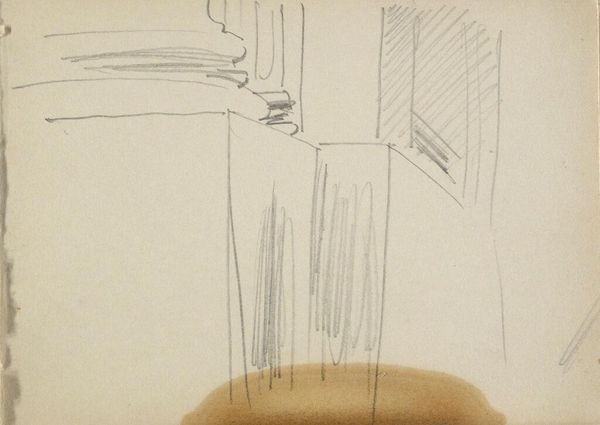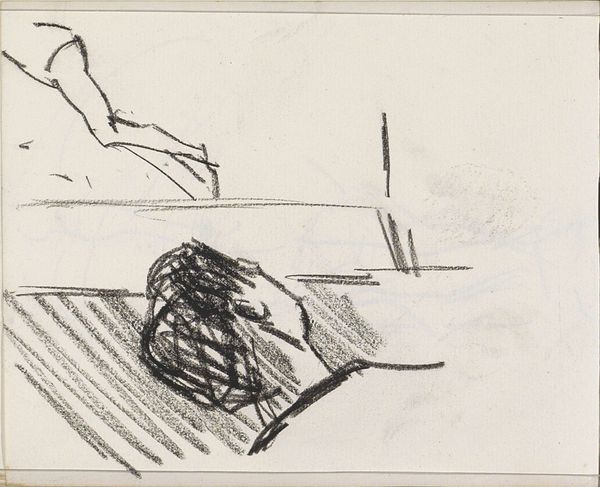
Copyright: Basil Beattie,Fair Use
Curator: Before us we have an "Untitled Drawing" by Basil Beattie, created in 2002. The work resides here at Tate Britain. It appears to be primarily charcoal on paper. Editor: Well, my initial reaction is a sense of stark simplicity. The raw, almost brutal application of the charcoal gives it a real tactile presence, despite its being a drawing. What strikes me is the directness, you can clearly see the hand of the artist and how he's labored to move material around the picture plane. Curator: Indeed. Beattie's work often walks this line between formal abstraction and something suggestive of architectural space. We see recognizable, if distorted, forms—a doorway, a structure reminiscent of a bridge, and what could even be interpreted as a mountain or a building block. Do you see how these are juxtaposed within the composition? How does this evoke the feelings for those public viewers? Editor: I find myself particularly drawn to that archway at the top. It's like a fragmented echo of classical architecture, reinterpreted in a contemporary, almost post-industrial context. Given his tendency for repurposing and heavy handed techniques, it evokes associations of building but also destruction. It looks less like an edifice, and more like the remains of it, if I had to be precise. And of course, being presented in a prestigious space, like Tate, allows us to appreciate this level of artistic and, some might argue, artisanal skill. Curator: That makes me consider its broader relationship to abstraction in the late 20th and early 21st centuries. What socio-political moments of those times helped define a drawing like this, with the collapse of modernist ideals as many critics have asserted in those years. I suppose we might even see a tension between the act of drawing, often conceived of as preparatory or intimate, and the imposing scale that Beattie achieves here through the weight of the charcoal. Editor: Precisely, in order to even procure that quantity of such high grade charcoal the resources invested indicate how serious this practice is for Basil. Thinking materially, the application of charcoal isn't seamless - its uneven application accentuates the sense of immediacy that suggests how artists navigate between chaos and intentional order within abstraction. It also adds texture that helps capture my attention the more I gaze at it, with an added level of dynamism and purpose. Curator: Overall, Basil's artistic decisions offer us much to consider! Editor: I completely agree. Hopefully the artwork invites viewers to explore their individual emotional and philosophical engagement in art spaces as they examine materiality up close.
Comments
No comments
Be the first to comment and join the conversation on the ultimate creative platform.

